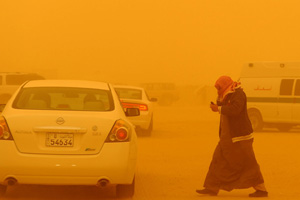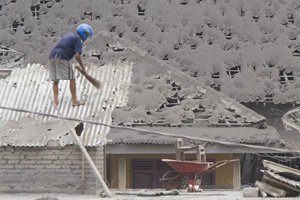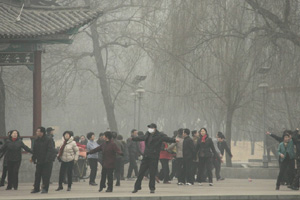
Yellow-grey smog was a frequent visitor to London in the 1950s and earned the name "London fog".
The heaviest, which shocked the world, was in 1952. Because of cold weather combined with an anticyclone and windless conditions, collected airborne pollutants blanketed the city, visibility was reduced to a few yards and an estimated 4,000 people died.
The main pollutant, sulphur dioxide, was linked to coal burning by many inner city factories and households and had reached exceptional levels.

Efforts
The legacy of the Great Smog was the Clean Air Act of 1956 which introduced a number of measures to reduce air pollution.
Furnaces could no longer emit "dark smoke" and households were offered grants towards the cost of converting their coal-burning grates to smokeless fuel.

Improvement
By 1975, foggy days in London had been reduced from around 50 to 15 and to only five in 1980. But new pollution threats are causing concern as air pollution mortality figures remain almost identical. Instead, today’s pollution is caused by nitrogen dioxide due to traffic fumes. The Mayor's Air Quality Strategy aims to reduce levels of nitrogen dioxide and particulate matter by: reducing transport emissions; cutting pollution from construction and energy generation; taking pollutants from road surface treatment and reducing exposure by warning people of high pollution days.
|
 |
 People clear volcanic ash in Indonesia |
 Top 10 cities with worst smog in China |
|
|
|
|
|
|
|
|